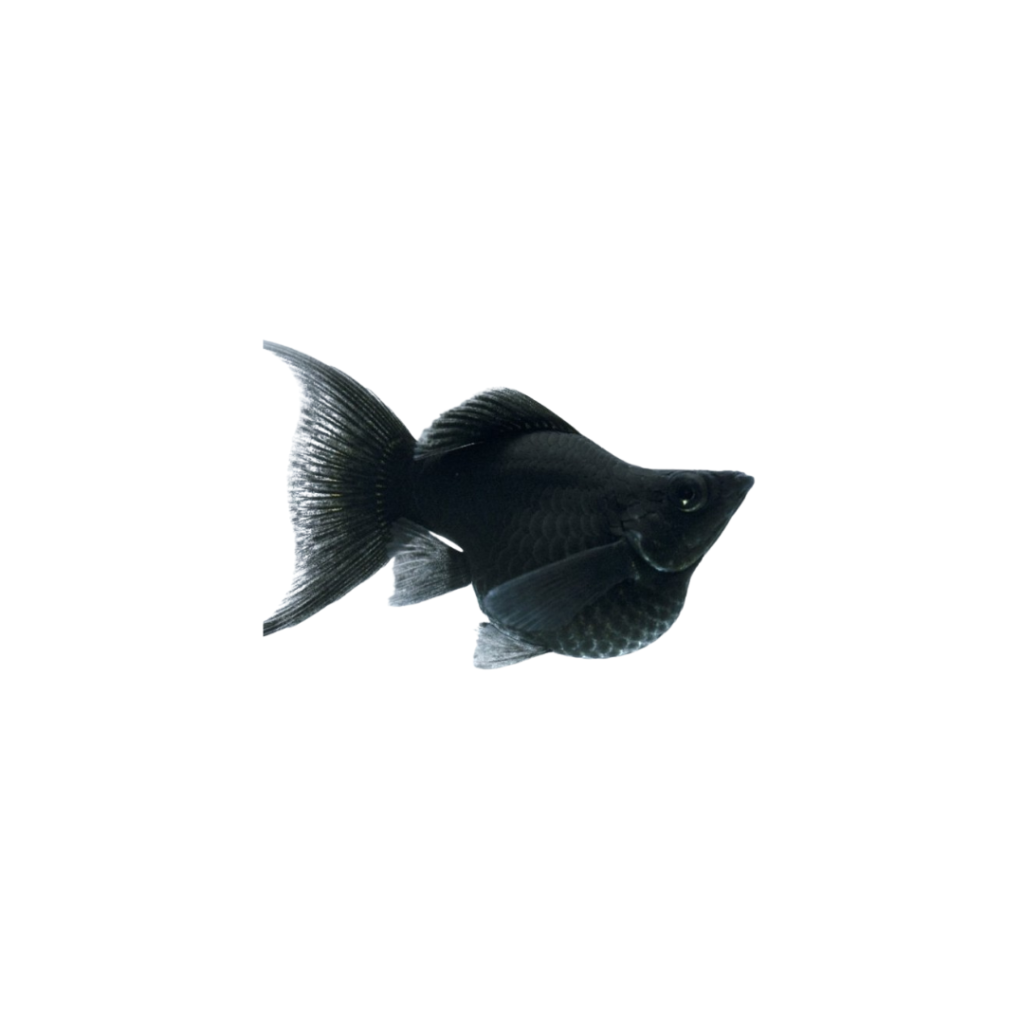Guppy Albino Snakeskin
Poecilia reticulata

Description
The Guppy Albino Snakeskin is a visually striking and beautiful variety of guppy, known for its unique pattern and vibrant coloration. As the name suggests, this variety features an albino body, which is characterized by a white or translucent appearance with a slight pinkish tint due to the absence of pigmentation. The standout feature of this variety is its snakeskin pattern that is typically found along the sides of the body, which consists of dark, thin, scale-like markings that resemble the pattern of a snake’s skin. The contrast between the albino white body and the snakeskin markings creates an eye-catching effect.
Habitat Origin
The Guppy Albino Snakeskin is a selectively bred variety of the common guppy (Poecilia reticulata), which is native to freshwater rivers and lakes in South America, especially in countries like Venezuela, Trinidad, and Guyana. Guppies are known for their adaptability to a variety of water conditions, and they thrive in environments with slow-moving water and abundant vegetation. The Albino Snakeskin variety was selectively bred to highlight the unique pattern on the guppies’ body while maintaining the vibrant colors of the tail and fins.
Aquarium
Ideal Number in Aquarium: Best kept in groups of 4 – 6 guppies to encourage natural schooling behavior and reduce stress. They thrive in groups and feel more secure with other guppies.
Favorite Food

The Guppy Albino Snakeskin is an omnivore, and it will eat a variety of foods. They can be fed flake food, micro pellets, and live or frozen foods such as brine shrimp, daphnia, bloodworms, and grindal worms. They also enjoy vegetable-based foods like spirulina, blanched spinach, and lettuce. A varied diet will ensure that they receive the necessary nutrients to maintain their health and vibrant colors.
Behavior:
Guppy Albino Snakeskin guppies are peaceful, active, and curious fish. They enjoy swimming in the middle and upper parts of the aquarium and are often seen interacting with other fish. As a schooling fish, they do best when kept in groups, as they feel more secure and show natural social behaviors when surrounded by others of their kind.
Special Care:
Although peaceful, males can be competitive when it comes to mating, and you may observe some chasing or flashing during courtship. However, the aggression is typically mild and does not lead to any significant harm. The females are generally more subdued in behavior but may show some territorial tendencies during breeding seasons.
Compatibility with Other Fish:
Guppy Albino Snakeskin guppies are peaceful and can be kept with other small, non-aggressive fish such as neon tetras, harlequin rasboras, small corydoras catfish, and other small livebearers. They are generally not suitable to be kept with larger or aggressive species, such as bettas, cichlids, or goldfish, as these could harass or eat them. They can also be kept with snails and shrimp.
Breeding Tank Setup
While Guppy Albino Snakeskin can breed in community tanks, using a separate 10–20 gallon breeding tank is highly recommended to protect fry from predation and better control water quality. They thrive in slightly alkaline water with a pH of 6.8–7.5, temperature between 24–28°C (75–82°F), and hardness of 8–12 dGH. A sponge filter offers gentle filtration to keep water clean without stressing the fish or fry. Substrate options include fine gravel or soft sand, complemented by live plants like Java moss and Anubias to provide hiding spots and promote biofilm growth. Moderate lighting with a 10–12 hour cycle helps regulate breeding rhythms while avoiding stress.
Conditioning for Breeding
Feed Guppy Albino Snakeskin a protein-rich, varied diet, including high-quality flakes, live foods (brine shrimp, daphnia), and frozen options like bloodworms or mosquito larvae. Maintain water quality with weekly 20–25% water changes using dechlorinated water at tank temperature to avoid stressing the fish and support breeding readiness.
Spawning Process
Guppy Albino Snakeskin are livebearers, with females carrying fertilized eggs internally for about 28–30 days before giving birth to 20–50 fully formed fry. Females can store sperm for multiple pregnancies. Separating the female from the male once pregnant reduces stress and prevents additional mating attempts.
Fry Care & Feeding
Newborn fry swim immediately and feed on biofilm and microorganisms naturally present. Supplement their diet with powdered fry food, baby brine shrimp, or finely crushed flakes, feeding small amounts multiple times daily. Maintain excellent water quality with daily small water changes (10–20%) and keep temperature stable between 24–28°C (75–82°F).
Additional Notes on Breeding
Females reach sexual maturity around 3–4 months, with males maturing slightly earlier. Males are smaller, more colorful, and possess a gonopodium for mating, while females are larger and rounder when gravid. Avoid overcrowding, sudden water changes, and aggressive tankmates to minimize stress, which is crucial for successful breeding and fry survival.
